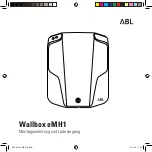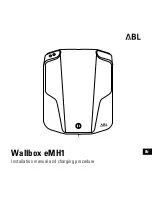
11
Vehicle Collision
In the event of a crash, the SRS (supplemental restraint system ) unit makes a judgment based on input from the impact
sensors. If the input values meet various threshold requirements, the SRS unit sends a signal to the high voltage battery
ECU (electronic control unit). The high-voltage battery ECU then turns off the high-voltage battery contactors, stopping the
flow of electrical current from the high-voltage battery.
When responding to an incident involving a Honda CR-V HYBRID, we recommend that emergency personnel follow their
organization’s standard operating procedures for assessing and dealing with vehicle emergencies.
Responders should always assume, however, that the HV system is powered on and take the appropriate action described
later in this guide to power off the system.
Seatbelts and Airbags
The Honda CR-V HYBRID is equipped with lap/shoulder belts in all seating positions. The front and rear outer seat belt reels
and the front lap belts are equipped with pyrotechnically activated tensioners that help tighten the seat belt in a crash.
In addition, the Honda CR-V HYBRID is equipped with the following airbags:
Front Airbags - Driver / Passenger
Side Airbags - Driver / Passenger
Side Curtain Airbags - Driver / Passenger
It takes up to 3 minutes for the airbags and tensioners to power off after the 12-volt system has been turned off by following
the emergency shutdown procedures provided later in this guide.
Submerged Vehicle
If a Honda CR-V HYBRID is submerged or partly submerged in water, first pull the vehicle out of the water. Then, shut
down the high-voltage system using one of the two procedures described on the following pages.
Aside from severe damage to the vehicle, there is no risk of electric shock from touching the vehicle’s body or framework
— in or out of the water. If the high-voltage battery was submerged, you may hear noises from the battery as the cells are
being discharged from shorting.
Emergency Procedures


































